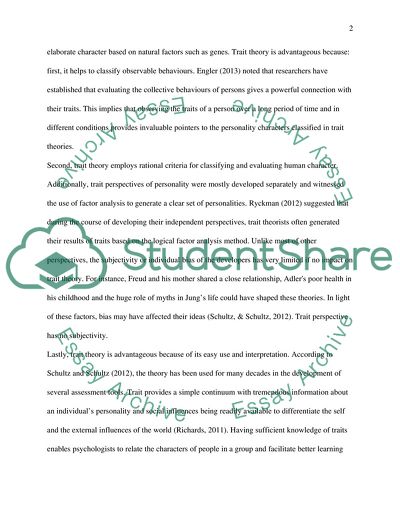Cite this document
(Trait Theory and Understanding Individual Differences Assignment Example | Topics and Well Written Essays - 2250 words, n.d.)
Trait Theory and Understanding Individual Differences Assignment Example | Topics and Well Written Essays - 2250 words. https://studentshare.org/psychology/1845013-how-well-does-trait-theory-help-us-understand-individual-differences-discuss-this-question-with-reference-to-personal-construct-theory
Trait Theory and Understanding Individual Differences Assignment Example | Topics and Well Written Essays - 2250 words. https://studentshare.org/psychology/1845013-how-well-does-trait-theory-help-us-understand-individual-differences-discuss-this-question-with-reference-to-personal-construct-theory
(Trait Theory and Understanding Individual Differences Assignment Example | Topics and Well Written Essays - 2250 Words)
Trait Theory and Understanding Individual Differences Assignment Example | Topics and Well Written Essays - 2250 Words. https://studentshare.org/psychology/1845013-how-well-does-trait-theory-help-us-understand-individual-differences-discuss-this-question-with-reference-to-personal-construct-theory.
Trait Theory and Understanding Individual Differences Assignment Example | Topics and Well Written Essays - 2250 Words. https://studentshare.org/psychology/1845013-how-well-does-trait-theory-help-us-understand-individual-differences-discuss-this-question-with-reference-to-personal-construct-theory.
“Trait Theory and Understanding Individual Differences Assignment Example | Topics and Well Written Essays - 2250 Words”. https://studentshare.org/psychology/1845013-how-well-does-trait-theory-help-us-understand-individual-differences-discuss-this-question-with-reference-to-personal-construct-theory.


